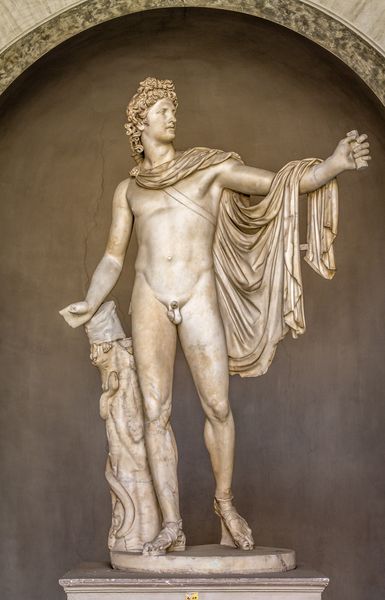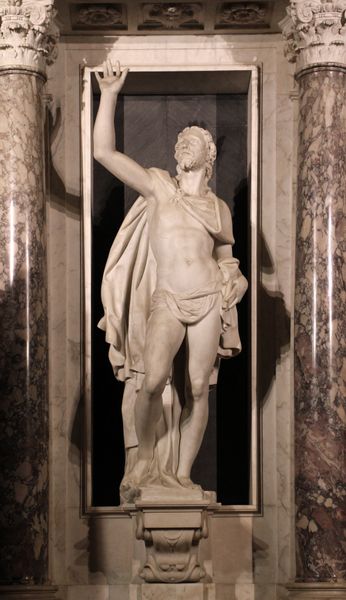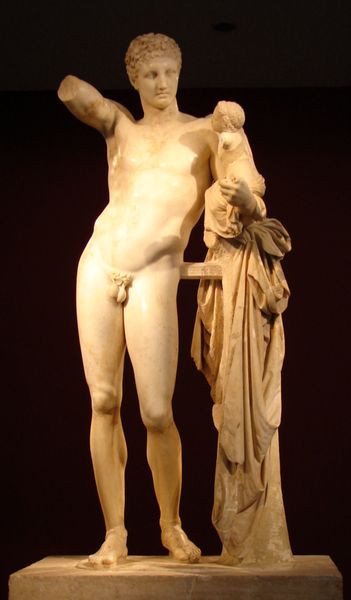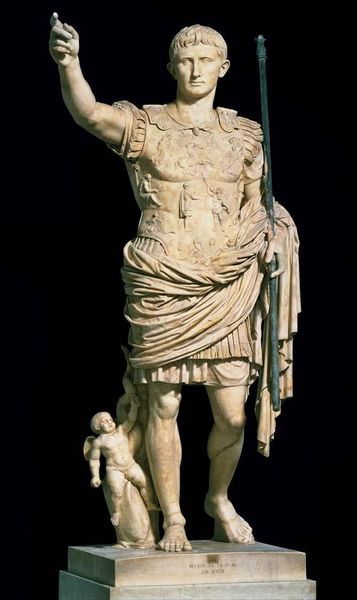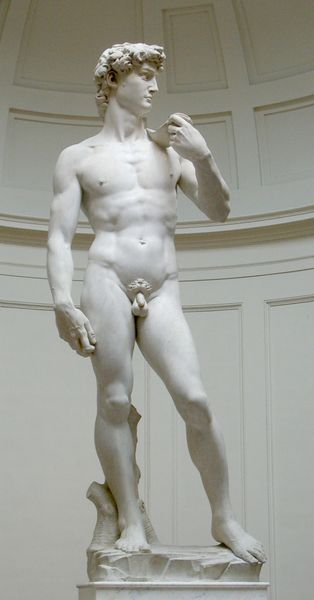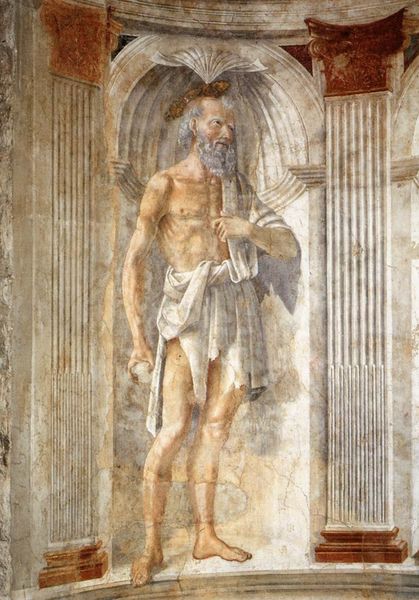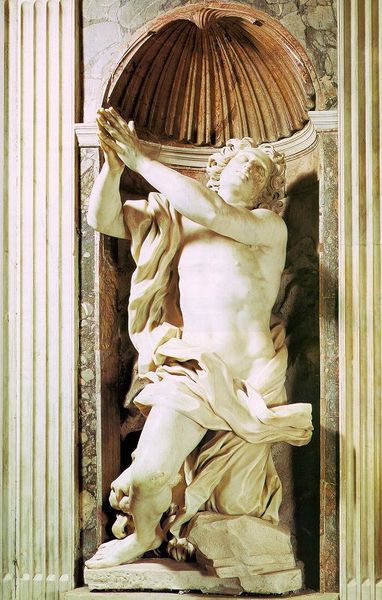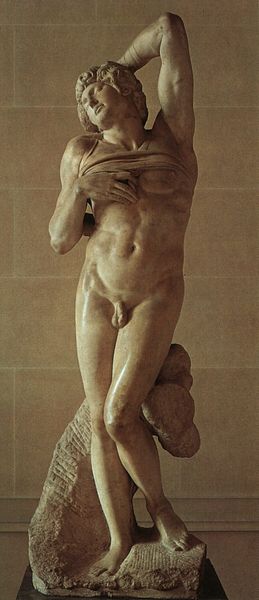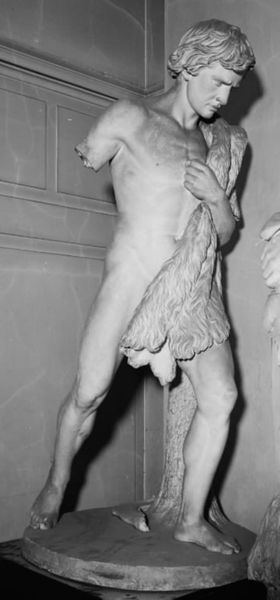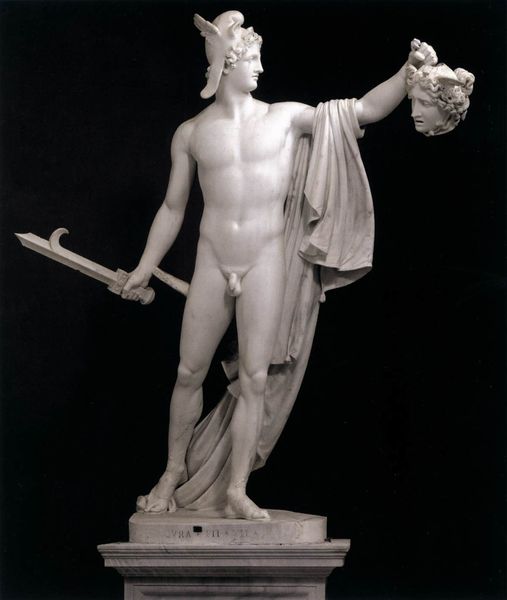
sculpture, marble
#
portrait
#
neoclacissism
#
statue
#
sculpture
#
classical-realism
#
sculptural image
#
sculpture
#
urban art
#
mythology
#
history-painting
#
academic-art
#
marble
#
nude
#
statue
Copyright: Public domain
Editor: This marble statue, "Napoleon as Mars the Peacemaker" created by Antonio Canova in 1806, strikes me as incredibly… theatrical. It’s a bold statement, presenting Napoleon as a god. How do you interpret this portrayal? Curator: This work brims with visual rhetoric. Canova consciously chose to depict Napoleon as Mars, the Roman god of war, but with the added title, 'Peacemaker.' He holds a staff, a symbol of power, but also an apple—an allusion to the Judgement of Paris, a symbol associated with peace and beauty. What emotions does the imagery evoke for you? Editor: The nude figure feels almost… vulnerable. Was this typical for portraits of powerful figures at the time? Curator: The nudity certainly wasn’t accidental. It harkens back to the classical ideal, aligning Napoleon with Roman emperors and the supposed virtues of antiquity. The Roman emperors saw the need to legitimize their reigns and cult of personality by adopting classical traditions. Yet the very choice of Mars is telling, because unlike other Graeco-Roman figures, such as Heracles or Apollo, Mars has a specific connotation to war, conflict, and conquest. This symbol directly speaks of war. But consider what the apple means within this martial context. Is Napoleon presenting an offering, or is he presenting an invitation for discourse? Editor: So it's not just about power, but also a complex negotiation of authority and… almost an appeal to reason? Curator: Precisely. The symbolism creates a layered narrative. What was intended may not be received, which is up to the audience’s own time. Napoleon likely thought that this iconography and association would instill legitimacy but to many today, it just appears as pure arrogance. Editor: That really reframes my understanding of the piece. It’s less a straightforward glorification and more of a carefully constructed… argument, using symbols. Thanks! Curator: Indeed, visual rhetoric can unveil intricate layers of cultural intention and interpretation across eras.
Comments
No comments
Be the first to comment and join the conversation on the ultimate creative platform.
